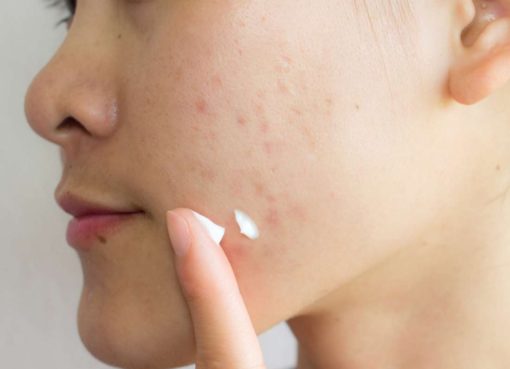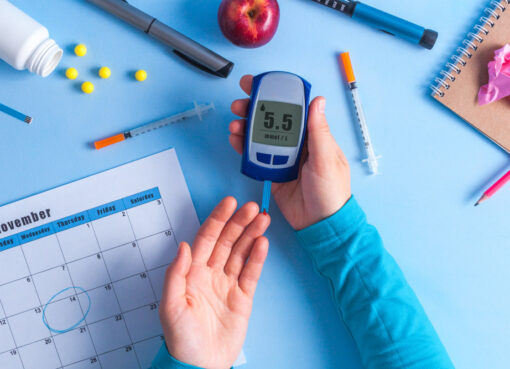Worldwide, diabetes cases are increasing exponentially. The U.S. Centers for Disease Control and Prevention (CDC) reported in 2018 that an estimated 10.5% of Americans of all ages had diabetes.
People with prediabetes can select from various treatment options. These options include alternatives to diabetes medications, including plant-based topicals for high blood sugar. Know more about it here.
What Precisely Is Prediabetes?
Prediabetes is defined as impaired fasting glucose, impaired glucose tolerance, or both attributes. The CDC reported that over one in three American adults have this health condition.
Prediabetes functions as an intermediate state that frequently develops into type-1 or type-2 diabetes within a few years. Type-2 diabetes is the most prevalent type, comprising 90% or more of all diabetes cases.
Prediabetes may be linked to a higher risk of both macrovascular (large blood vessels) and microvascular (small blood vessels) complications.
If possible, medical doctors aim to reverse an individual’s prediabetes. They also attempt to prevent the development of “full-blown” diabetes.
Lifestyle Modifications for Diabetes Prevention
Medical practitioners can assist prediabetes patients in making lifestyle alterations to help lower blood sugar levels and reduce the risk of developing diabetes.
Research indicates that this option can be especially effective in preventing diabetes. However, a diabetes patient’s noncompliance with such lifestyle modification measures may be problematic in the daily clinical practice of medical professionals.
Lifestyle modifications to help prevent diabetes among people with prediabetes include:
High-Fiber and Healthy Diet
According to past research, fiber may reduce the risk of developing various conditions, including heart disease, diabetes, and constipation.
Low-fiber diets that cause blood sugar spikes may, conversely, increase one’s risk of developing type-2 diabetes.
Two recent Harvard studies revealed that diets low in fiber doubled the risk of type-2 diabetes compared to high-cereal fiber diets.
Research also stated that consuming healthy fats, besides maintaining a high-fiber diet, may also help lower the risk of prediabetes developing into diabetes.
Fatty foods are high-calorie, and people should consume a moderate amount of the macronutrient.
It is also beneficial to consume more unsaturated fats. Options include monounsaturated and polyunsaturated fats.
Sources of “good” fat include:
- Nuts and seeds, such as walnuts, pistachios, pumpkin seeds, and flaxseed
- Fatty fish, such as tuna, mackerel, sardines, and salmon
It is also advisable to minimize fats in food sources such as meat and dairy. Some healthy choices include lean chicken and pork and low-fat dairy.
Regular Exercise
In 2010, the American Diabetes Association and the American College of Sports Medicine released a joint position statement. It discussed the efficacy of exercise to reduce the risk of type-2 diabetes.
More physical activity (PA) may help prevent or delay both diabetes and diabetes complications. The researchers noted that PA is critical for helping prevent and control diabetes symptoms, such as insulin resistance.
The researchers indicated that people should maintain regular exercise to experience continuous results. Meanwhile, varying training types are also likely to help treat and prevent type-2 diabetes.
Options for PA include an exercise program and other activities that increase a person’s overall PA. It is also critical to use safety precautions to maximize efficacy.
Weight Loss
The CDC reported that losing a small amount of body weight and maintaining regular exercise may lower one’s risk of type-2 diabetes, even people with prediabetes.
A “small” amount of body weight ranges from 5% to 7%.
Meanwhile, regular exercise typically means at least 150 minutes of weekly activities such as brisk walking. That figure can be segmented to 30 minutes per day, five days per week.
No Smoking and Minimum Alcohol
Type-2 diabetes is one of several health conditions connected to smoking. Smokers are around 50% more likely than nonsmokers to develop diabetes, while heavy smokers have an even higher risk.
Notably, little research has been conducted on how moderate alcohol consumption affects individuals with a high risk of diabetes.
A study found in the American Journal of Clinical Nutrition researched the correlation between alcohol consumption and diabetes risk.
Participants who consumed moderate alcohol and practiced lifestyle modifications or took diabetes drugs experienced a lower risk of incident diabetes.
Meanwhile, the researchers noted that moderate alcohol consumption is connected to low insulin secretion, which requires further study.
Natural Treatments for Diabetes Prevention
Research conducted in recent years revealed that such treatments may provide benefits for prediabetes patients.
Various studies, such as research by the National Diabetes Prevention Program (DPP), and meta-analyses have demonstrated the efficacy of prescription treatments.
However, more research is required, especially on the effectiveness of such medications on macrovascular and microvascular complications,
In addition, such treatments contain potent synthetic ingredients that are more likely than natural remedies to cause unwanted side effects. Alternative therapies include natural topical products.
People with diabetes should research the efficacy of certain natural treatments for prediabetes. Researchers have conducted less research on over-the-counter (OTC) and natural remedies compared to prescription diabetes medicines.
One should also share with their doctor if they are taking any prescription drugs before starting any natural treatment. A physician can discuss any “drug interactions” that may transpire when combining a natural remedy with certain pharmaceuticals.
Conclusion
Prediabetes strategies include options such as lifestyle modifications. The clinical goals include reverting prediabetes and preventing diabetes.
More research is required on the clinical benefits of such prediabetes treatments. Diabetes medications can provide significant results. On the other hand, they also involve more risks and side effects than natural remedies due to potent synthetic ingredients.
References
- National Diabetes Statistics Report 2020
https://www.cdc.gov/diabetes/pdfs/data/statistics/national-diabetes-statistics-report.pdf
- Prediabetes: to treat or not to treat?
https://pubmed.ncbi.nlm.nih.gov/22020287/
- Prediabetes – your chance to prevent type-2 diabetes
https://www.cdc.gov/diabetes/basics/prediabetes.html
- The Nutrition Source: Fiber
https://www.hsph.harvard.edu/nutritionsource/carbohydrates/fiber/
- Exercise and type-2 diabetes
https://www.ncbi.nlm.nih.gov/pmc/articles/PMC2992225/
- Prediabetes – your chance to prevent type-2 diabetes
https://www.cdc.gov/diabetes/basics/prediabetes.html
- Active smoking and the risk of type 2 diabetes
https://pubmed.ncbi.nlm.nih.gov/18073361/
- Alcohol consumption and diabetes risk in diabetes prevention program
https://www.ncbi.nlm.nih.gov/pmc/articles/PMC2728644/
- Diabetes prevention – 5 tips for taking control





